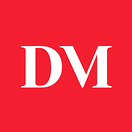Creative destruction. I can’t seem to get it out of my head.
It’s a term economists have used to describe the business atmosphere of our time. Basically, the world's changing. Technology's advancing. And all of it’s happening fast.
Whole countries are adopting crypto. Zuckerberg’s Meta and others are promising a virtual world.
Robots are even making hamburgers (we all know McDonalds is looking forward to that, TBH).
At the same time that these disruptions power entrepreneurs toward multi-billion dollar valuations, they also spell disaster for companies that don’t adapt. Since the year 2000, 52% of Fortune 500 companies have gone bankrupt, been acquired, or ceased to exist.
It’s all a cycle. New businesses are created, old ones are destroyed, the world keeps spinning, ad infinitum.
If you’re looking for a UX consultancy, maybe you’re thinking about this too. You believe that your business is at an inflection point. You might’ve just acquired some companies, or you’re looking to enter a new market. You might be a market incumbent fending off competitors, or you’re a high-growth disruptor looking to reshape your industry.
Whatever the case, you know you need an outside perspective. You know that transformative change and innovation is a perilous road, and that UX consultants might be just what you need to avoid pitfalls and capitalize on opportunity.
But when UX consultancies start talking about user experience and Double Diamonds and Design Thinking, executives and upper management might get a bit uneasy. What do these things mean? What does a UX consultancy actually do?
Most importantly, how can they transform your business?
We’ll answer that below:
Disrupt or Be Disrupted: How a UX Consultancy Can Transform Your Business
Creative destruction is a zero sum game. Any time a disruptor succeeds, they do so at the expense of slower-moving incumbents. It’s the way of the world today. The old gives way to the new.
That is, of course, unless the old becomes the new.
Whether you’re an early-stage or high growth SaaS startup looking to shake things up, or an incumbent enterprise looking to capitalize on your strength, you need to innovate. You need to think differently.
A UX consultancy can help you do that by facilitating 3 big organizational changes:
Product Design Consultants Make You More Customer-Centric
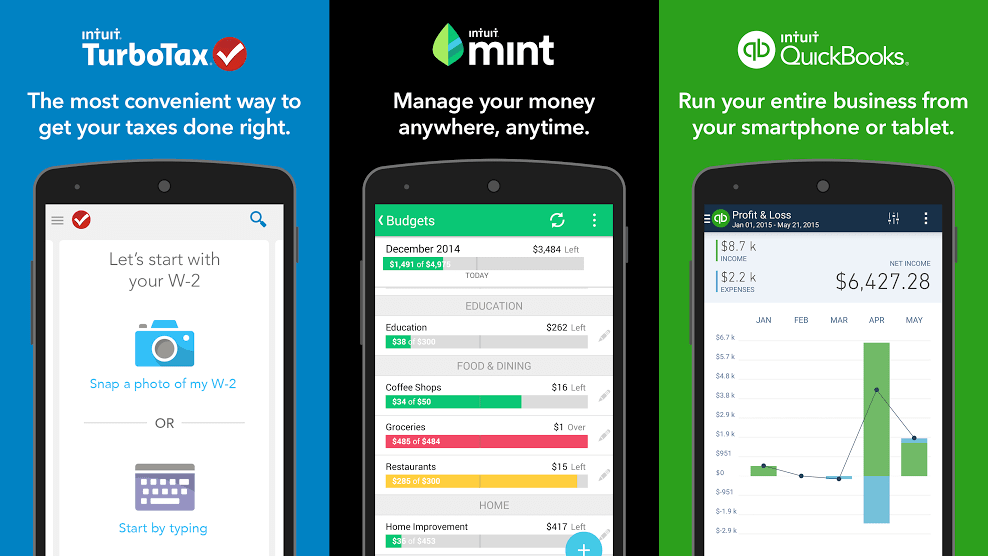
User experience. Customer centricity. Human-centered design. These are the big buzzwords of the day, and not without good reason.
The companies that are winning today—the ones riding rocketships to multi-billion dollar valuations—are the ones putting the customer experience at the heart of their business goals and digital strategy.
Take a look at Intuit. $166.2 billion market cap. Roughly 10 unique product lines. They just acquired the well-loved Mailchimp for $12B, expanding Inuit’s already extremely successful business.
Well, like anyone who’s used TurboTax or Mailchimp will tell you, Intuit’s products are a delight to use. A big part of how they’ve been able to create such a delightful ecosystem is by putting the customer at the center of everything they do.
A good UX design consultancy can help you do the same. With their help, you should be able to produce a top-tier user experience that solves customer problems and drives satisfaction. If you have more than one product, UX consultants can also help you tie these into a cohesive platform experience that’s greater than the sum of its parts.
Product Design Consultants Empower Your Design Org

Over the last decade or so, we’ve seen a paradigm shift. The way people buy software in B2B has completely changed.
It’s no longer purely about the enterprise sales motion. Now, some products provide such a good user experience that they literally sell themselves.
Atlassian’s one of our favorite examples, and a past client (no bias ;-). Here’s a company that designed their way from a 2-person startup to unicorn status with an IPO over $4B. They did this in 10 years without an internal sales team.
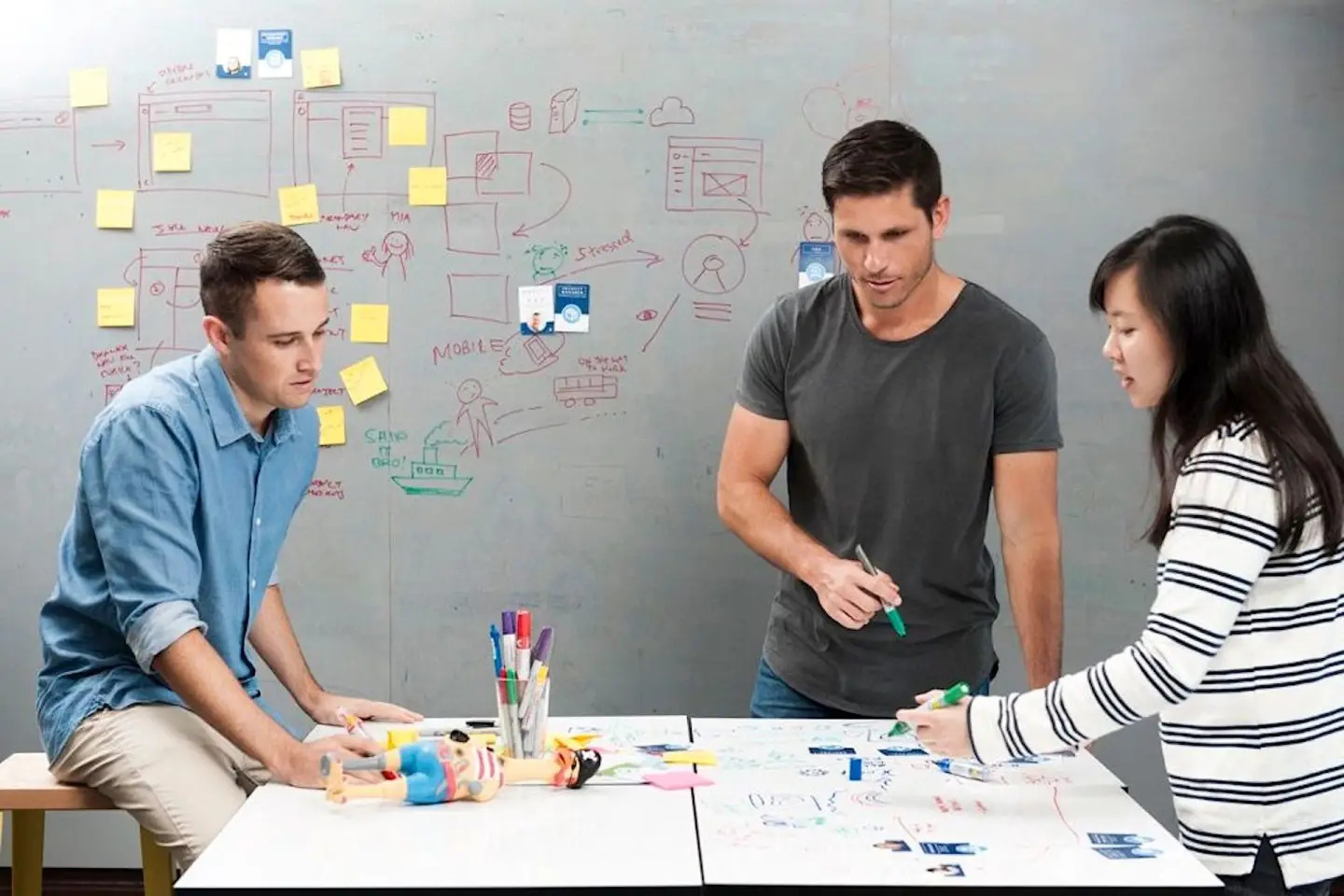
A team at Atlassian engaged in a brainstorming session.
To achieve that kind of product-led growth, you need a best-of-breed UX team. And they need to be empowered to apply their skillsets at every level of your organization - from the entire product lifecycle all the way up through strategic planning and market definition.
A UX consultancy can help you achieve this high level of design maturity. Through workshops, training, and embedding their expert designers on your team for project support, UX consultancies can instill best practices and improve the processes & skills of your UX team. They can also educate your wider employee base on Design Thinking, empowering product teams and beyond to apply innovative thinking to customer problems.
Product Design Consultants Make Your Company Visionary
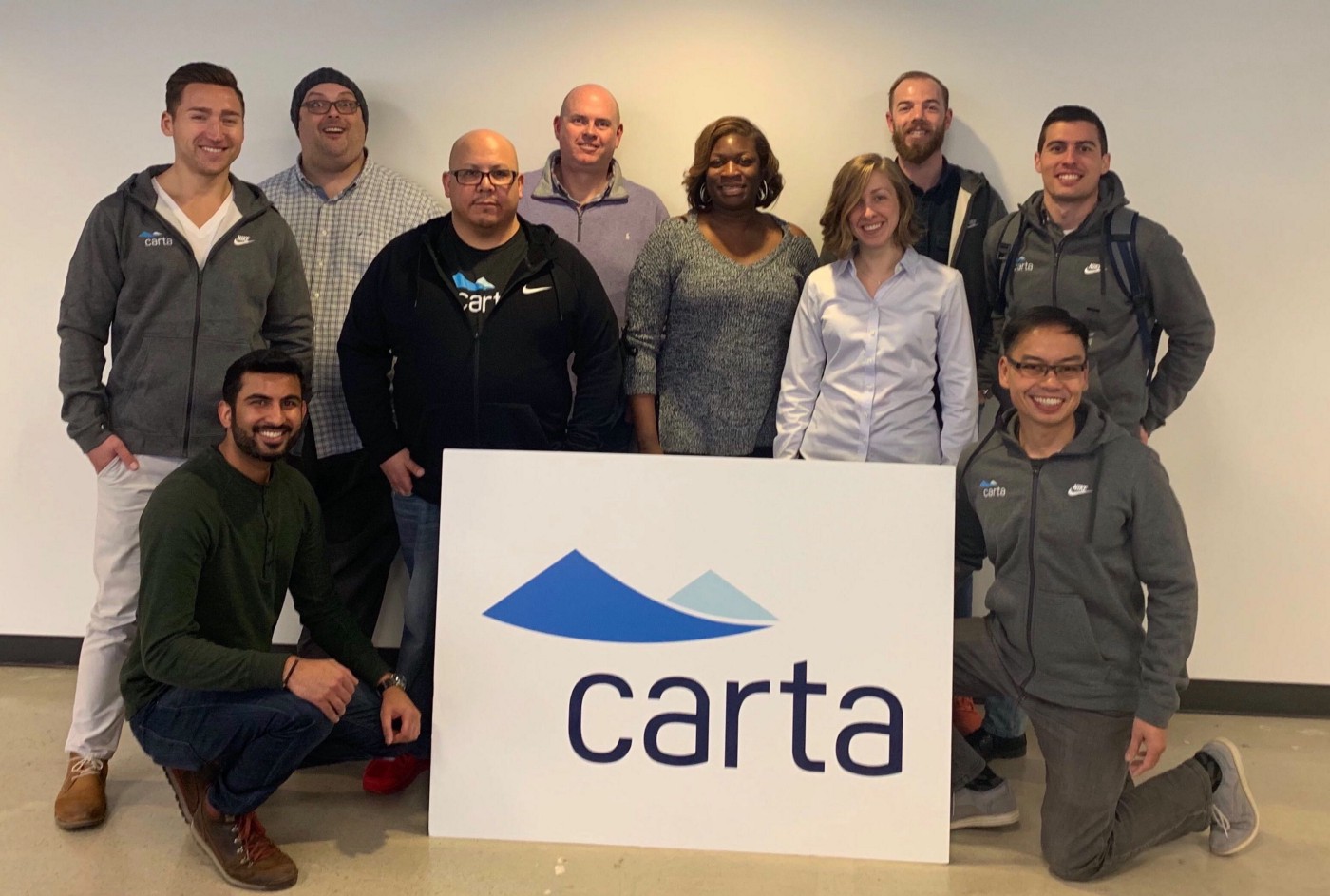
100% of Carta’s employees are aligned behind their product and company visions, according to Comparably.
It’s a brave new world we’re living in. Things are changing faster than ever. Bleeding edge technologies like VR/AR or AI/ML or NLP are poised to completely change the way we do business.
As these technologies mature, companies will fall into one of three buckets: the ones that fall from prominence and see their market share dwindle; the ones that tread water, neither gaining nor losing; and the ones that thrive, some of whom will make quantum leaps ahead of their competitors.
These are the visionaries; the next household names. They’re the ones that consistently engage in landscape analyses and strategic forecasting to always be one step ahead. They see emerging trends as opportunities, and are able to marshall their resources and align behind an inspiring vision of their product’s future.
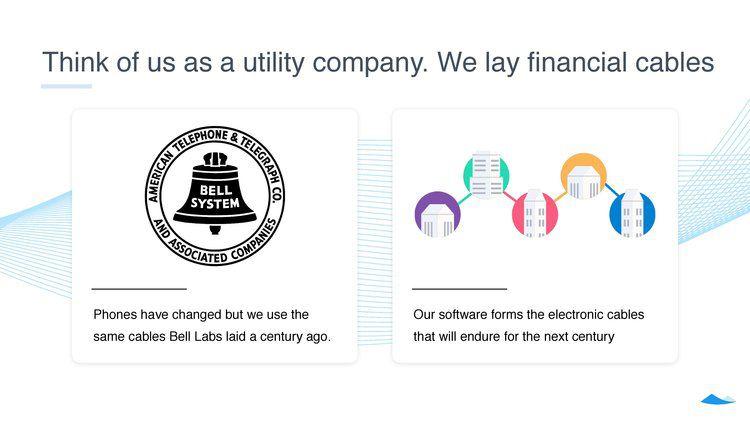
Carta’s vision is to completely transform capital markets in a way that doesn’t exclusively advantage the wealthy few. We love it.
A UX consultancy can help you develop these visions. They can bring the deep expertise and fresh perspective needed to see trends and changes for the inflection points they are. They can help you craft your product vision, then help get your teams excited and aligned behind the vision.
Complexity: the #1 Obstacle to Transformative Change
Sometime in the last decade, human civilization passed a watershed moment. The world finally became too complex for any one of us to understand.
I don’t know exactly when it happened. Maybe it was the COVID-19 pandemic, when interconnected global supply chains and health systems broke down. Maybe it was the 2016 election, when AI-driven social media algorithms accelerated disunity and brought fringe conspiracy theories to the forefront. Or perhaps it was in 2008, when a tear in the vast interwoven fabric of our financial system brought the global economy to its knees.
Whenever it happened, one truth has become clear: navigating the rapidly-changing, interdependent, AI-driven systems of our society is really hard.
Nowhere else is this more true than in B2B.
Organizational silos. Misaligned teams. Competitive pressures. Changing market dynamics, and the unique needs and perspectives of countless personas and stakeholders. It’s a real cluster.
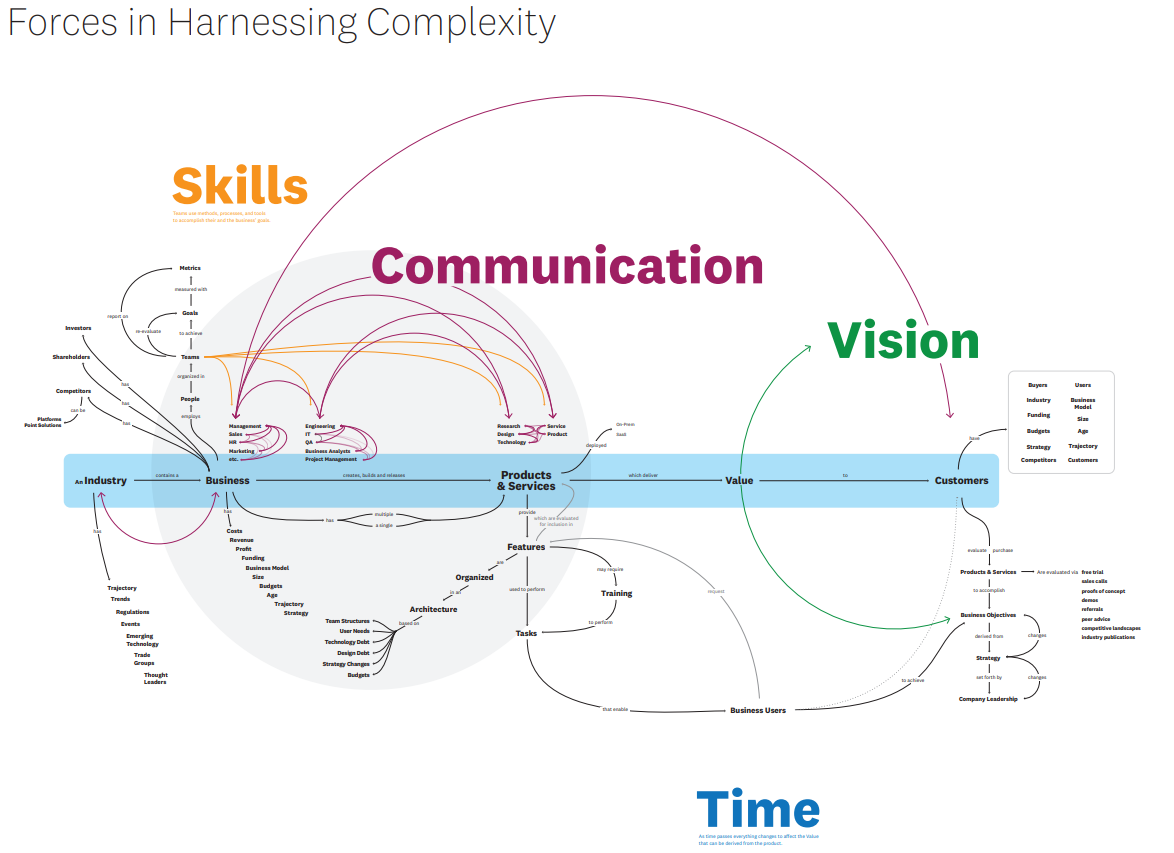
B2B companies have to navigate extremely complex environments to build game-changing products. A product design consultancy can help you do this.
If it’s your job to figure out how to build a revolutionary B2B product, you know you’ve got your work cut out for you. You know you need a holistic and nuanced understanding of this system. You know you’ll need the alignment and support of key stakeholders in your organization to make this happen.
You also know that doing all of this can be extremely difficult without the strategic expertise and fresh perspective needed to think outside the box.
This is where a UX design consultancy can come in.
UX and product design consultancies aren’t encumbered by internal biases. They can empower your product org with the strategic, outside-the-box thinking needed to build that game-changing B2B platform.
How exactly do they do that? While we can’t speak for other consultancies, here’s how we think about it at DesignMap:
Harnessing Complexity: The DesignMap UX Consulting Process
Our clients come to us when they’re at an inflection point. They might’ve just raised a round of funding, or are under pressure from disruptive competitors and point solutions.
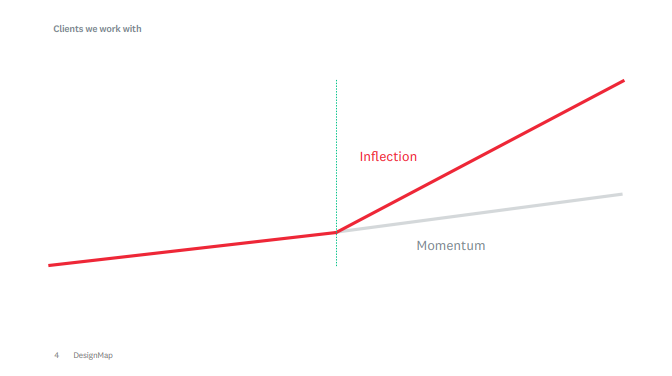
Whatever the case, the stakes are high, and incremental change won’t cut it.
Over our 25+ years designing software in Silicon Valley, we’ve perfected a 3-phase process that helps our clients capitalize on these inflection points as much as possible.
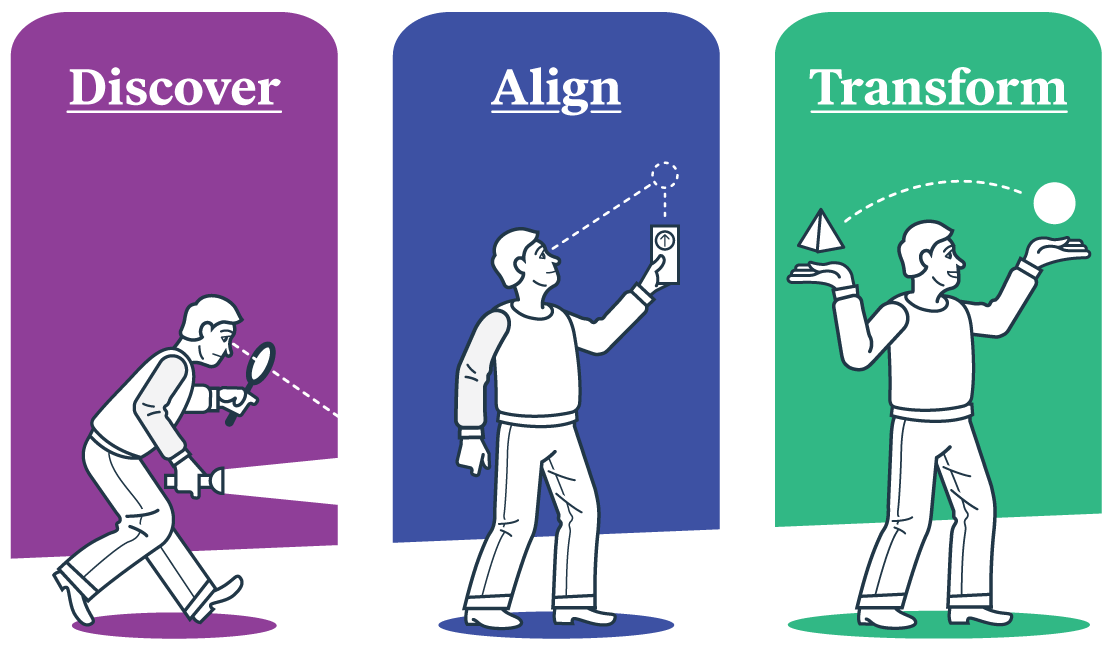
Phase 1: Discover
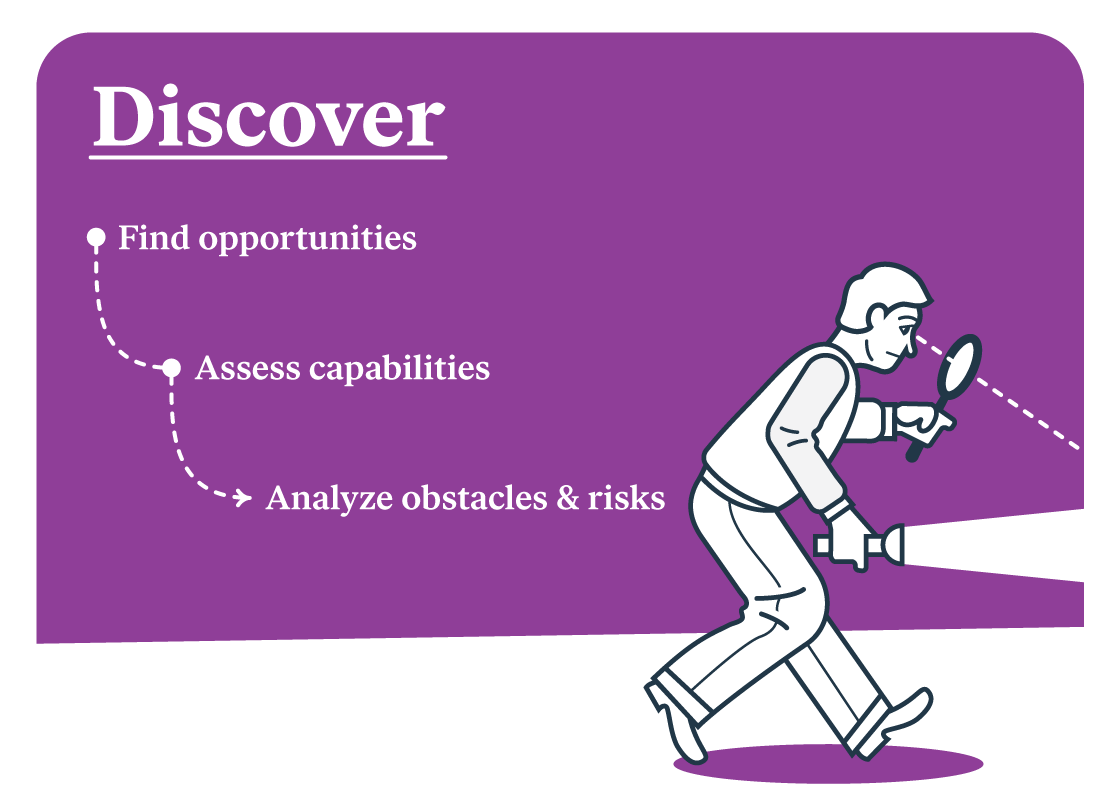
When our clients come to us, they know they’re at an inflection point. They know their path is beset with both risk and opportunity. Problem is, they often aren’t aware of the full extent of either.
The goal of this phase is to discover both.
We start this phase with an audit of the client’s product and organizational dynamics. This includes activities such as:
- Stakeholder interviews
- Review of existing user research & product kpis
- Conducting product user testing
- Audit of product capabilities and visual design
- Heuristic analysis
At the same time, we conduct a macro and micro-level analysis of the client’s market and target customers. This includes activities such as:
- Market landscape & competitor analysis
- Product ecosystem mapping
- Customer interviews
- User scenario analysis
- Field research
- User persona development
- User journey mapping
Once both these tracks are done, we synthesize this research to come to a clear understanding of the problem and the true scope of the opportunity.
Phase 2: Inspire
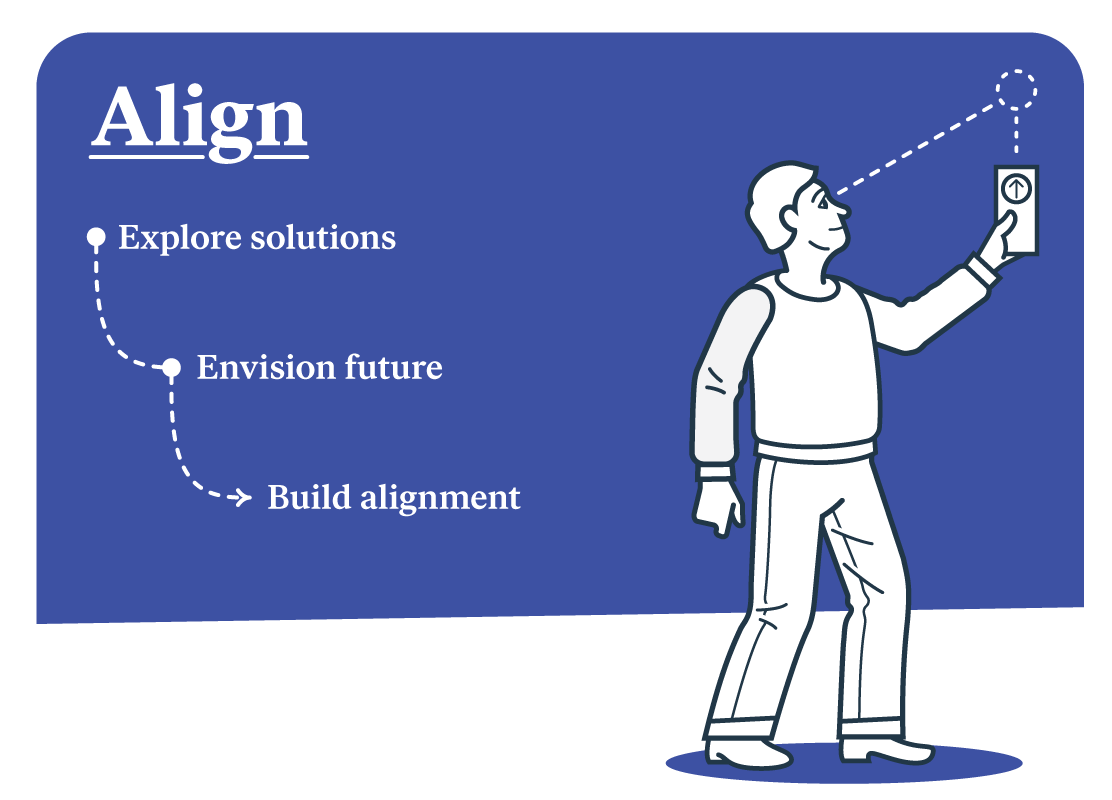
Once we’ve clearly identified the right customer problem to solve, then it’s time to figure out how to solve it right. We begin by ideating on the first iterations of the product vision, using our research from the Discover phase as a guide.
Once we’ve identified promising solutions, we begin to craft wireframes and low-fidelity prototypes. We validate these prototypes with more stakeholder and customer interviews, narrowing the solution down until we finally arrive at the product vision.
Once we have that however, our job isn’t done.
One of the biggest challenges organizations face is building alignment around their product vision. Reorganizing product teams, aligning incentives, and marshalling resources can be extremely difficult if internal stakeholders are not bought-in and excited by the promise of your vision.
So in order to build the necessary alignment, we empower our design & executive champions with a high-fidelity “Visiontype” of what your product or platform could be in 3-5 years.
Our clients use these Visiontypes to show their internal stakeholders what the future could look like. When people are able to actually see the solution—when they can click around and test the user-friendly functionality—they can clearly envision how this platform might change customers’ lives.
This is what gets everyone excited. This is what gets everyone inspired.
Frequently, our clients will present these Visiontypes at their annual conferences, or to a customer advisory board for feedback. I couldn’t hope to describe how rewarding it feels for crowds of customers to cheer for your product vision.
Phase 3: Transform

Once everyone is aligned behind your vision, it’s time to execute. We offer a full suite of end-to-end product design and UX consulting services to support our clients as they begin to bring these product visions to life.
We break these into 3 core buckets:
Validation & Activation Planning
- Marketing landing page for vision validation
- Product vision explainer videos
- Customer advisory board programs
- Executive roadshow & alignment materials
- Vision roadmap development
Training & Coaching
- Design sprint facilitations
- Product design workshops & masterclasses
- Best practice development for prototyping, usability testing, UI design, design approach, facilitating innovation, and creating design systems
- UX strategy coaching & support
- Design leadership training & support
- Design team structure and organization design
- Design team hiring support & best practices
- Design process & methodology training
- Design Thinking and fundamentals workshops
- Cross-functional product development training
UX Strategy & Design Services
- UX research & usability testing
- User & work flows
- Concept maps
- Storyboards
- Journey maps
- Information architecture & navigation
- Wireframes
- Component specifications & design systems
- Visual & user interface design
- Hi-fidelity mockups
- Prototyping
- End-user & stakeholder personas
- Product redesigns
Why Trust DesignMap as Your B2B UX Design Consultancy?
Since we were founded in 2006, we’ve helped some of the tech industry’s top enterprises and high-growth startups achieve wild success.
We crafted and executed the product vision that got ExactTarget acquired by Salesforce for $2.5B. We helped train the UX team at Carta that designed the product ecosystem they used to raise a $500M Series G at a valuation of $7.4B. We've helped companies in complex industries like healthcare, FinTech, B2B, and others build world-class digital brand experiences.
In short, we’ve been there and done that. We’ve had the opportunity to hone our process on some of the most successful companies in Silicon Valley. If your company’s run into a design challenge, chances are we’ve guided our clients through it and can help you too.
More than anything else, we love what we do. Each and every DesignMapper loves solving complex problems and empowering B2B product teams to design their way to success.
If you’re looking for a B2B product design consultancy, send us a note. We’d love to hear from you.
How to Hire a UX Design Consultancy
Audrey Crane, one of the partners here at DesignMap, talks about how to evaluate which UX consultancy in her book “What CEOs Need to Know About Design”.
She provides a list of questions to ask prospective consultancies:
Questions to Ask Prospective UX Design Consultancies
Vetting a studio is partially about finding someone who works the way you want. If someone isn’t as responsive as you’d like, or seems too controlling, there’s another consulting firm out there.
Ask these questions to vet design consulting firms
- What areas and industries do you specialize in?
- How do you support clients after handoff?
- How do you keep this process transparent?
- Are the people pitching me this service the same people who will be working on my project?
- NOTE: This is an important one. A lot of consultancies will use their “A team” during pitches, then have their “B team” actually do the work. Make sure you talk to the team that’ll actually be doing the work.
- Who are your references?
- What don’t you do?
- What do you expect from us as the client? What do we need to be prepared to do to help?
- UX design agencies won’t be expecting this question, but they should have a very clear answer. They should know what does and doesn’t work for them.
Questions to Ask References
Do not hire a digital product design studio without asking for references and following up with them. Of course, they’re sending you to people they selected, but you can still find out what kind of company they are to work with by asking the right questions.
Ask these questions to your UI/UX studio’s references:
- What is this consultancy's working relationship like? How did they interact with you day to day?
- What was their attitude throughout the process? Did you like how they worked?
- How did the handoff go?
- Do you feel like you got the value that you paid for?
- What impact did it have on your business to work with them?
- Will you hire a UX design agency again? If so, would you use this one?
Red Flags and Green Lights
Picking the right UI/UX studio is like going on a date. It’s not enough for a meeting to just go “okay”–you’ve gotta have compatibility and chemistry. Here are a few cues I generally consider “red flags” and “green lights.”
Red Flags (Don’t Hire a UI/UX Consulting Firm If…)
- The studio can’t immediately provide a list of reliable references. (Run!)
- They develop grand plans and solutions on their own after a single meeting, then present these to you. (The process should be collaborative and iterative.)
- They are resistant or refuse to show you actual work in progress—you only get to see the slick brochure.
- They seem bored by your project or write it off as simple.
- Your project seems too small or inexpensive for their studio.
- Their team has only ever worked at consultancies, and has no in-house experience.
Green Lights (It’s a Good Sign If…)
- They ask a lot of questions and want to dig in immediately.
- They begin to add value and help your team while you are still in “sales conversations.”
- They seem excited and enthusiastic about your project in a way that is almost contagious.
- You genuinely like the people you are talking to and have good chemistry.
- You meet the actual designers who will be working on your project in the first few sales conversations.
Your Company’s Transformation Starts Today
Things are changing fast, and they’re only going to change faster. The companies that make bold moves will leapfrog their competitors and secure their companies’ positions for years to come, while those that don’t will fall by the wayside.
As the B2B space continues to get more complex, and as business buyers focus increasingly on world-class digital experiences, finding the right user experience design consulting partner can be a massive competitive advantage.
From crafting an inspiring product vision all the way through building and executing, a UX consultancy might be just what you need to build the game-changing product that’ll define your industry for years to come.
Interested in working with DesignMap? We’d love to hear from you. Reach out for a consultation to see if we’re right for you.
